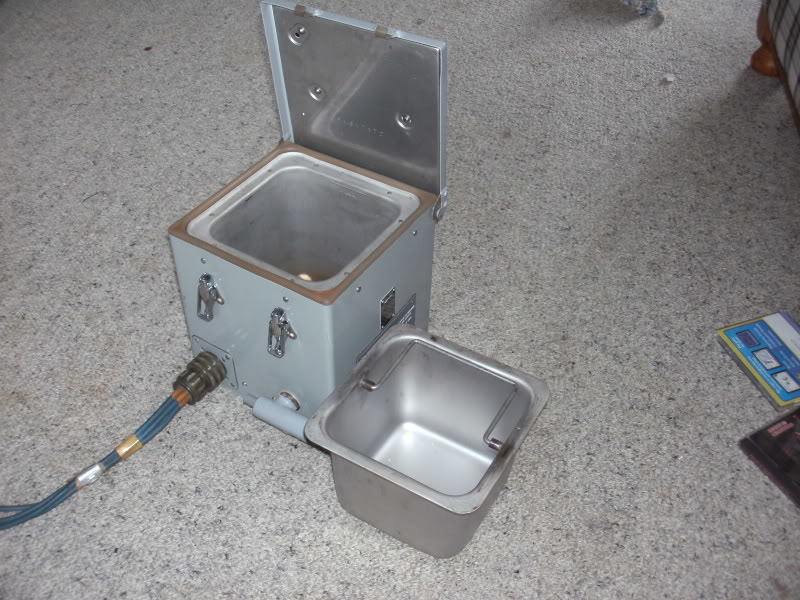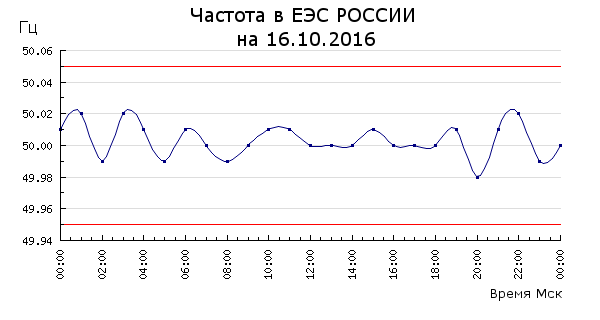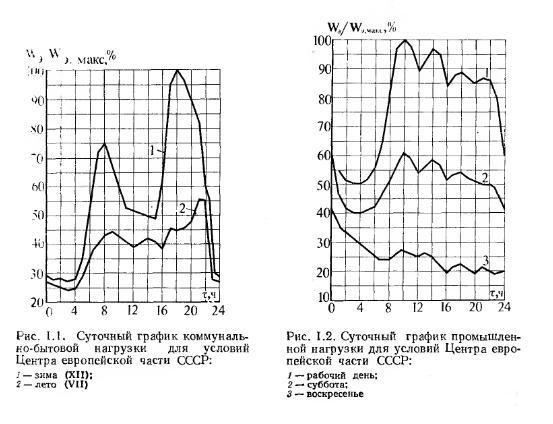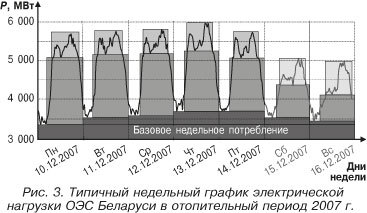Three-kilowatt teapots, television without ads, or why British energy producers watch soap operas at work

Since 1945, every British tank has equipment for making tea. One of the representatives of Boiling Vessel.
The “ war of currents ” ended not in favor of Edison's camp. The world chose to transmit energy in the circuits of alternating electric current, and the constant to receive from it by straightening if necessary. For the transmission of energy over long distances, high-voltage lines are needed, and it was not until the sixties of the last century that we learned how to increase the DC voltage without significant losses and mechanisms with moving parts . At that time, the question of choosing the nature of the future power grids was no longer relevant.
To transmit AC at a distance, its voltage is raised by transformers to tens, hundreds, thousands of kilovolts, and allowed through power lines. Upon arrival to the consumer, the transformers lower the voltage to the desired values. And only if some kind of electronics requires a constant current, resort to current rectifiers. High-voltage direct current lines still exist, but most often for the transfer of energy through submarine cables, where a high cable capacity would cause high losses to the reactive power of alternating current.
So, the world is entangled with towers power lines. But generation and transmission are only half the trouble. The mode of operation of the grid is determined not by the power plant, but by the consumer. In some situations, this can be compared with the client-server architecture of websites: a large website should have enough servers, or some of the users will not wait for the pages to load. In power grids, the situation is complicated by the inability to directly put an excess of output somewhere or take the missing at a critical moment. A balance must be maintained at any time.
')
If the energy produced is not enough, then the frequency of the alternating current will go down. If the power plants are underloaded and there is an excess of energy in the network, the frequency rises. Approximately the same engine with excessive or insufficient load turns the wheels of the car more slowly or faster, respectively. Typically, the frequency oscillates around the nominal tenths and hundredths of a Hertz. For example, the frequency of alternating current in the Unified Energy System of Russia fluctuated yesterday.

It is logical to combine all power plants and all consumers in one power grid. So it will be easier to “smooth out” the peaks and declines of consumption. In this case, all electric generators of the grid (that is, regions, countries or even several countries) should work synchronously, at the same frequency and phase. Out-of-sync means that the generators of power plants will start working against each other, wearing power lines with losses in the form of useless reactive power. In general, any mistake means that consumers - from important industries to ordinary people - risk being left without electricity.
There are two methods to increase the falling frequency of the current in the power system: either add current producers or disconnect the load. The load parameters are determined by the consumer, and disabling consumers for the dispatcher is one of the extreme measures. For example, the standard “System Operator of the Unified Energy System” “ Rules for preventing the development and liquidation of disturbances in the normal mode of the electrical part of the power systems ” (STO 59012820.29.240.007-2008) allows for disconnection of consumers when the frequency is below 49.80 Hz and the reserves are exhausted.
For load balancing use peak power, that is, those that help to cope with the sharp increase in energy consumption for short periods of time. This means that such a power plant should develop its full capacity in minutes or stop.
Running a conventional steam turbine is a slow process, it takes several hours . Therefore, gas turbine , conventional and accumulating hydroelectric stations help in smoothing the peaks. There are also semi-peak installations that have a limited limit for maneuvers.

And also in the arsenal of power engineers there is knowledge when to expect a large load. It is dictated by statistics and ordinary everyday observations. At six in the morning, traffic begins in the cities: people get up, turn on the lights, cook food, get to workplaces on electric transport. In the evening, they return home through the illuminated streets, turn on consumer electronics and get ready for bed. After midnight, there is a night failure, when the main consumers of the power systems remain two- (rarely) and three-shift production.

Light on foggy Albion
So why this theory? In addition to the usual load peaks in the United Kingdom, a unique situation has emerged that is unlikely to occur anywhere else in the world. It is associated with several factors.
As in Russia, a 50-Hz alternating current of 230 volts lives in household outlets in the UK. Sockets themselves are slightly different from other European standards . Type G has a built-in fuse and a ground connection, sockets are polarized, that is, it is known on which “phase” and “zero” contacts.
The power developed is the product of current and voltage. In the United Kingdom, heating devices are possible that can boil water faster than in the US: 230 volts and 13 amps (2,990 watts) per socket versus 120 volts and 15 amps (1,800 watts). If the British adopted American standards, it is unlikely that many types of household electric heating appliances would become widespread.
The stereotype draws the British as a great tea lover. It is less known that the British most often use electric kettles, and do not heat water on gas. Wait until the water boils - absolutely unacceptable. British electric kettles develop good power. In the top twenty best-selling on Amazon.co.uk 15 boil water with a capacity of 3000 watts. For comparison: in Russia, teapots are more often two kilowatt, three-kilowatt do not recommend to buy because of concerns about poor wiring.
In addition to tea, Britain has an advanced television system with its own characteristics. The British prefer only a few large channels. Although newcomers select viewers, large networks retain leadership. In 2015, 15 channels had almost 65% of the total audience.

Data on the distribution of the audience for 2008.
The BBC television broadcaster is the world's oldest and largest in Britain, three-quarters of which is sponsored by a tax on televisions . Each of the British families who watch or record TV shows must receive a television license. You need to pay for the license every year: 145.50 pounds (≈11 thousand rubles) for a color TV, 49 pounds (≈3.8 thousand rubles) for black and white. And even if only every tenth Briton agrees with the size of the tax, but this money adds a few unique features to British television.
There is no commercial advertising on BBC One. Transmissions are not interrupted. When they end, they can show several clips about other programs or messages about charity campaigns. It makes no sense to break off the middle of the series at an interesting moment, so that viewers do not switch somewhere else during the commercial break.
As a result, the British power engineers are forced to watch the BBC and urgently adjust the grid requests. At the end of the program, which is not interrupted by advertising, the British immediately turn on the electric kettle and open the refrigerator. The phenomenon was called TV pickup .
The poor fellow needs to watch the Eastenders every evening.
Horse races take place in the evening, for example, by nine, when several popular TV shows end or go on advertising on those channels where it is. A typical jump is a sudden 200-400 megawatts from nowhere, large soap operas promise about 700-800 MW. This is a noticeable peak: in 2007, England, Scotland and Wales usually lived in the evening at 41,000 megawatts (41 GW).
But these are only typical cases, the daily dispatcher of the British grid. On July 4, 1990, during a World Cup match between Britain and Germany, post-match penalties required 2.8 gigawatts of boiling water for tea. On the morning of August 11, 1999, the British showed an interest in a solar eclipse, and consumption fell by 500 megawatts. After 11:15 in the morning they returned to their homes and workplaces, consumption grew by 3 gigawatts at once.
A royal family wedding, an athletic match, a popular TV series - all this is riveting people to the screens at the same time. Then millions of electric kettles are included throughout Britain, which creates a serious test for the island’s power grid. Perhaps in the future, smart teapots can solve the problem, which are turned on by themselves or remotely. In the meantime, TV pickup is a way to watch TV at work for the British energy industry and one more funny stereotype about tea in the United Kingdom.
The status of the UK national grid
Source: https://habr.com/ru/post/369777/
All Articles